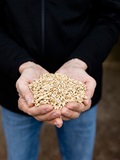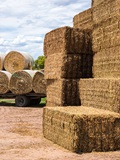Atherton Tableland
20 May 2020
| Date | AT 23 | AT 22 | AT 5YA |
|---|---|---|---|
| 06-Jan-23 | 350 | 290 | 330 |
| 13-Jan-23 | 350 | 290 | 330 |
| 20-Jan-23 | 350 | 290 | 330 |
| 27-Jan-23 | 350 | 290 | 330 |
| 03-Feb-23 | 350 | 290 | 330 |
| 10-Feb-23 | 350 | 290 | 330 |
| 17-Feb-23 | 350 | 290 | 321 |
| 24-Feb-23 | 350 | 290 | 311 |
| 03-Mar-23 | 350 | 290 | 311 |
| 10-Mar-23 | 350 | 290 | 311 |
| 17-Mar-23 | 350 | 350 | 323 |
| 24-Mar-23 | 350 | 350 | 323 |
| 31-Mar-23 | 350 | 350 | 323 |
| 07-Apr-23 | 350 | 350 | 318 |
| 14-Apr-23 | 350 | 350 | 313 |
| 21-Apr-23 | 350 | 350 | 309 |
| 28-Apr-23 | 350 | 350 | 309 |
| 05-May-23 | 350 | 350 | 309 |
| 12-May-23 | 350 | 350 | 309 |
| 19-May-23 | 350 | 350 | 309 |
| 26-May-23 | 350 | 350 | 309 |
| 02-Jun-23 | 350 | 350 | 309 |
| 09-Jun-23 | 350 | 350 | 309 |
| 16-Jun-23 | 350 | 350 | 313 |
| 23-Jun-23 | 350 | 350 | 316 |
| 30-Jun-23 | 350 | 350 | 316 |
| 07-Jul-23 | 350 | 350 | 316 |
| 14-Jul-23 | 350 | 350 | 316 |
| 21-Jul-23 | 350 | 350 | 316 |
| 28-Jul-23 | 350 | 350 | 323 |
| 04-Aug-23 | 350 | 350 | 330 |
| 11-Aug-23 | 350 | 350 | 330 |
| 18-Aug-23 | 375 | 350 | 330 |
| 25-Aug-23 | 400 | 350 | 331 |
| 01-Sep-23 | 400 | 350 | 333 |
| 08-Sep-23 | 350 | 337 | |
| 15-Sep-23 | 350 | 337 | |
| 22-Sep-23 | 350 | 339 | |
| 29-Sep-23 | 350 | 339 | |
| 06-Oct-23 | 350 | 334 | |
| 13-Oct-23 | 350 | 346 | |
| 20-Oct-23 | 350 | 346 | |
| 27-Oct-23 | 350 | 346 | |
| 03-Nov-23 | 350 | 346 | |
| 10-Nov-23 | 350 | 343 | |
| 17-Nov-23 | 350 | 345 | |
| 24-Nov-23 | 350 | 345 | |
| 01-Dec-23 | 350 | 345 | |
| 08-Dec-23 | 350 | 345 | |
| 15-Dec-23 | 350 | 345 | |
| 22-Dec-23 | 350 | 345 | |
| 29-Dec-23 | 350 | 345 |
Notes:
Change in price is the change since the last report. Hay quoted is sourced and delivered locally, GST exclusive unless stated otherwise. It should be noted that local prices quoted may not be the cheapest available, sourcing it from another region may be more affordable, and buyers are encouraged to evaluate all options. Prices are indicative to a mid-range shedded product, and based on the best indication of market value at the time of reporting. It should be noted there is a wide variation in quality of hay, prices for a mid-range product will not reflect the weighted average of trade. Prices will naturally vary based on the product quantity and quality, buyer/seller relationship and the size of the trade.The hay report has been commissioned by Dairy Australia to provide an independent and timely assessment of hay markets in each dairy region. This report is created using data provided by the Australian Fodder Industry Association (AFIA). It should be remembered that actual prices may vary for quality or other reasons. Whilst all reasonable steps have been taken to ensure the accuracy of the information contained in this report, Dairy Australia disclaims all liability to the fullest extent permitted by Australian law for any inadvertent errors and for any losses or damages stemming from reliance upon its content. Dairy Australia recommends all persons seek independent advice and, where appropriate, advice from a qualified advisor before making any decisions about changes to business strategy.
Commentary
- Light rainfall across the region this week, with light showers causing some issues with fresh cut hay. Temperatures are trending upwards throughout the region.
- Hay is being cut across clear days, with growers taking advantage of any opportunity to get onto paddocks. However, this has been followed by intermittent rainfall which has been enough to wet hay. This has led to wet harvesting which has seen the quality of some hay reduced and therefore being sold as mulch rather than as feed quality.
- Hay shortages are expected as the season progresses, with a number of growers now choosing to spread risk and plant other crops rather than invest in hay production without guaranteed return.
- Fuel prices have stabilised at the bowser at around $2.09 per litre. However, with the fuel excise now removed, growers are expecting the full 25c per litre to be passed on to them in the coming weeks.
- Urea prices have remained high and are currently averaging around $1,500 per tonne. Liquid fertiliser shuttles have increased in price from around $4,500 to $6,500, which while cost effective, is a substantial initial outlay.
- Hay has been moving a little more across the region, with most heading west. However, the price point remains static. There is the belief this will continue until storms hit and then trade will come to a halt.
- No change to pricing this week even with increased fodder trade, though demand remains subdued. Growers continue to indicate that input costs require a price rise to maintain interest in producing hay. Demand expected to increase in coming months.
- Pasture (Rhodes Grass) hay: +/-0 ($300 to $400/t). Prices remain steady.
- Please note: Hay in the Atherton Tablelands is traditionally priced at $/bale, so it is important to check bale weights for conversion. The price range indicated is for feeds of varying quality with the price range generally indicative of quality of feed. We recommend feed testing and viewing of fodder before purchase to be sure of the quality of feed.

